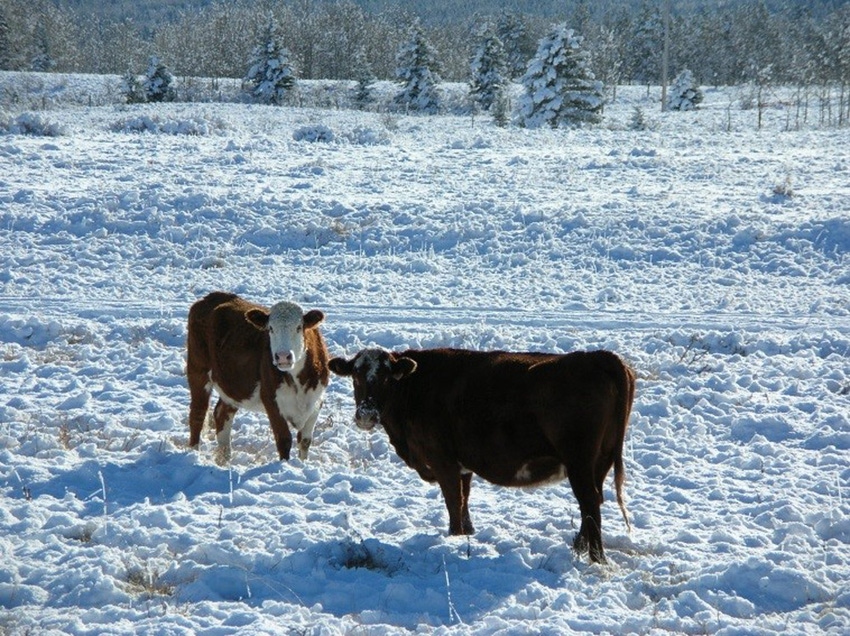Can you use snow as a water resource for your cattle?
Research shows that utilizing snow as a winter water source can be a viable option for cattle producers. Follow these tips to properly use snow on your ranch.
February 2, 2016

Sponsored Content
When you live in the northern US and Canada, this time of year means cold temperatures and snow. They go hand in hand with iced over and frozen waterers. This can lead some to look at the snow covered range and wonder if the snow can be used as a water source.
After reviewing the literature, the answer is yes, cattle producers (sheep and horse producers too) can have their animals use snow as their water source. However, there are a number of conditions that go along with that answer.
Condition and quantity of snow matters
The condition, or type, of snow in the pasture is important. Cattle need soft, powdery snow in order to eat it for water. Clean snow is also very important. Since changing weather conditions can lead to a crust forming on snow pack, producers need to monitor snow condition. If snow becomes crusted over, and it’s the sole source of water, producers will need to break up the crust.
Quantity should also be taken into consideration. Research from Canada has shown that cattle will eat 30 to 40 lbs of snow per head per day to meet their water needs. Cattle will also alternate between eating snow and drinking from a waterer. In this scenario, cattle drank 2 to 3 gallons and ate 7 to 25 lbs of snow.
Condition and stage of production
It should come as no surprise that cattle need to be in good health and good condition to utilize snow. Dry, gestating cattle with a body condition score (BCS) of 3-4 or better can successfully utilize snow on winter pastures. Monitoring BCS, with the help of a body condition score app will give producers an idea of nutritional status of the cattle. A drop in BCS is an indication that it’s time to make liquid water available. Cattle in early lactation, regardless of BCS, need to have liquid water. Water requirements jump with early lactation and only having snow available won’t be enough. Additionally, snow might not provide enough water for breeding bulls. Bulls need ample water to help prevent urinary calculi.
Finally, keep in mind that there is an energy expense to melt the snow in the body. The exact level needed varies depending on which paper you read. Research in Canada and Montana didn’t show a difference in performance or feed intake between cows on snow versus cows on water. This could suggest that the cattle can adapt. Bottom line is to keep an eye on your cows and make changes if they start to loose condition.
Have alternate sources available
We now know that we can take advantage of the drifts on the pastures, however, it’s important to have Plan B ready to go. The January thaw could be right around the corner turning the soft, clean snow into a muddy mess in a few days. Or the next cold snap with a strong north wind can create beautiful, but crusted drifts. In either situation, cattle shouldn’t and won’t eat the snow. Be ready to break open a stock dam or fill a water tank if snow conditions fall off.
Utilizing snow as a winter water source can be a viable option for a number of producers. Monitoring cattle as well as the snow can allow a producer to carry their cattle the entire winter. Proper supplementation can make this production system a success as well. CRYSTALYX® Brand Supplements has a number of protein supplements to fit any budget and production goal in a winter grazing situation. The CRYSTALYX® Beef Cow Body Condition App is also great resource for evaluating reference photos to determine what a BCS looks like in addition to having a pictorial BCS record for individual cows. Visit www.crystalyx.com for more info.
You might also like:
Is production efficiency the answer to falling cattle prices?
Timing is everything when it comes to weaning
About the Author(s)
You May Also Like


.png?width=300&auto=webp&quality=80&disable=upscale)
